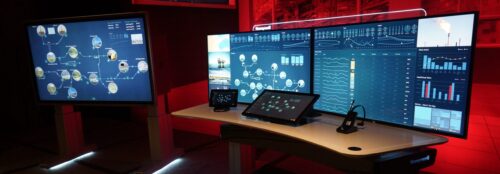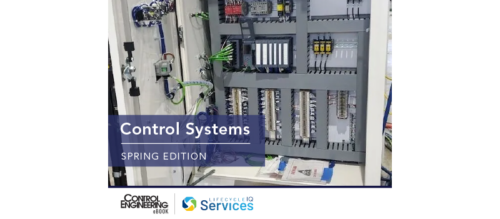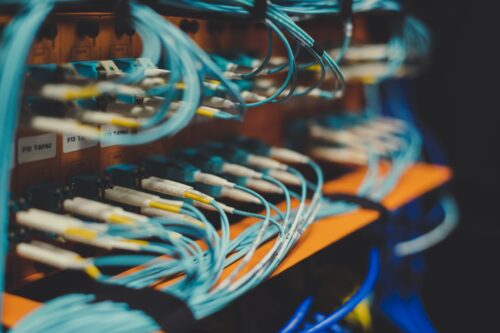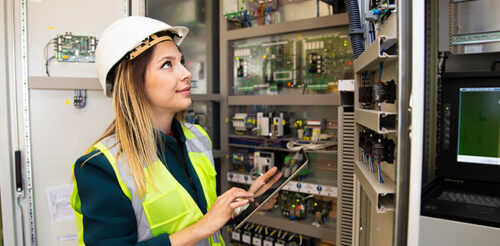Stop the scrap, track the problems
When Greg Richards joined the Quadrant Engineering Plastics Products (EPP) Reading, PA, plant in 1999, he was a man on a mission. The controls engineer and maintenance manager found losses from operator error and equipment failures added up to thousands of dollars every month and accounted for 5% unplanned annual downtime.
When Greg Richards joined the Quadrant Engineering Plastics Products (EPP) Reading, PA, plant in 1999, he was a man on a mission. The controls engineer and maintenance manager found losses from operator error and equipment failures added up to thousands of dollars every month and accounted for 5% unplanned annual downtime.
Richards was determined to stop the financial drain for Quadrant EPP. The engineering thermoplastics company makes machined wear parts used in semiconductor manufacturing, chemical processing, food handling, medical, and automotive industries. Its wide range of thermoplastics shapes are formed by a wide range of processes, including casting, extrusion, and compression molding. Eliminating ongoing losses and improving efficiency were right in line with its corporate strategy, which included investment in production and logistics sites around the globe.
Richards knew where to start: with the existing, out-of-date, mix-and-match control system. He discovered that equipment from 10 automation suppliers controlled the various process lines. Multiple control platforms complicated communications and, with no way to automatically capture historical data, it was nearly impossible to track, trend, or diagnose a problem. “The big thing for me is having it all integrated,” Richards says.
“Our products are highly engineered materials. The raw material costs range from $1 to several hundred dollars per pound. Ruined product can cost thousands of dollars per inch. Even slight variations in the process can cause significant waste and downtime,” Richards says. Most of the problems were often repeated, he adds, because there was no way to automatically detect and diagnose trouble, and defective products could go unnoticed from shift to shift.
As a former system integrator with more than 12 years of experience, Richards knew that, by upgrading the automation system, he could eliminate the losses from scrap and reduce annual downtime. Today, Richards’ automation vision is approximately 50% complete; it includes what Siemens Energy & Automation calls Totally Integrated Automation.
The processes are being upgraded with Siemens Simatic S7 315, 317, and 400 controllers, TP 170A and TP 270 touchscreen human machine interface (HMI) monitors, and 3 hp to 75 hp Masterdrive drives. The controllers are programmed with Simatic Step 7 software, and HMI visualization is programmed with Simatic WinCC flexible software. Ethernet communication is used from PCs to the PLCs, and Profibus is used for I/O communications.
Discover the why
Prior to standardization, it was possible to find as many as 20 temperature controllers, multiple pressure controllers, and chart recorders of varying brands on each line in addition to different PLC brands controlling the processes. “By using the Simatic S7 PLCs, we can use the same analog input card with multiple I/O, from 4 to 20 and zero to 10,” Richards says.
“We can buy one card and reuse it anywhere within the plant,” he continues. Also, before we standardized, we had no temperature, heater current, or pressure historical data. If the line malfunctioned at midnight, we couldn’t tell if the operator changed temperatures or if there was a problem with a heater. We didn’t know when or why the line started to fail,” he says.
Since some processes take more than 20 hours to complete, it was possible to incur enormous scrap costs before problems were discovered. “We could run for entire shifts without realizing we were burning the material,” Richards recalls. “The full loss could be incredible.” In addition to defective product, production was halted when a line failed. The expensive resins would solidify and force technicians to tear down the entire line and then reset the process. It could take a few hours or several shifts to fix the problem, depending on the size of the set up.
Current predictive maintenance
Many of the unplanned shutdowns and much of the scrap occurred because of unchecked heating problems as the materials moved through a line. In the past, Quadrant EPP used standalone temperature alarm trees. When a heater would malfunction, another would automatically compensate, so an alarm did not activate and one side of the product would burn. Now operators catch heaters going bad almost immediately. They can shut down the line to stop wasting resin or replace the heater while the line is running.
Through the touchscreens, operators can instantaneously take a “snapshot” of a heater’s current and then set an alarm to notify them when the current changes more than 10%. Also, now that recipes and alarm settings are available on the touchscreens, operators don’t need to manually set each controller by entering a standard operating procedure number.
“The historical data allows us to compare temperature and pressures at any given time,” Richards says. “This includes gradual pressure build ups, or if we are starting to lose a profile in an oven. We can track changes over the past 60 days.” That helps with troubleshooting.
One platform, lowered costs
By standardizing on Siemens Simatic Manager software, Richards says he has cut his startup and programming time by 50%. He no longer has to replicate an established process onto multiple vendors’ PLCs, operator panels, and drives when expanding the plant.
“I don’t have to recreate all those tags,” Richards says. “I just drop a function block into my Simatic software, route a couple of speed and start signals, and I’m done. I can move anywhere in a department, plant, or plant-to-plant, and reuse the same code.”
In addition, standardizing the touchscreens throughout the plant enhances operator effectiveness and comfort. Richards says the common menus and faceplates have helped eliminate process errors and provide the alarm and trending information operators need.
The using one industrial network has simplified resolution of online problems. In the past, each platform required a special communications card, making it difficult to track each standard and increasing the time needed to integrate and interface the platforms.
“I want to deal with just one company that always communicates the same way,” Richards says. Using the same standard saves a lot of setup time.
“I can duplicate the code so the learning curve is not as steep from device to device.” The Profibus DP and PA communications networks also helped Quadrant EPP retain 12 legacy Siemens 545 series PLCs — one of which has 1,500 to 1,600 I/O points and controls about 50 PID loops. “When we do upgrade the legacy PLCs, all my I/O and communications are still the same. So all I have to do is upgrade the processor. That is a big thing for us,” Richards says.
At half way through the upgrade, Richards says the plant has eliminated the 5% annual downtime, and the losses from scrap are now negligible. He is pleased with the ongoing progress and has achieved his goals. Quadrant EPP can automatically recall historical data, and mistakes are not repeated because operators can track, trend, and diagnose a problem.
Having PLCs, drives, HMIs, and controls “communicate, be developed, and maintained from a common platform allows projects to be implemented more effectively and reduces engineering cost during design and startup,” says Richards. The system allows for legacy product integration, he says, and has the “strength to move forward to develop new products that integrate into our design.”
Author Information
Phil Aponte is HMI and SCADA manager, Siemens Energy & Automation.
Do you have experience and expertise with the topics mentioned in this content? You should consider contributing to our CFE Media editorial team and getting the recognition you and your company deserve. Click here to start this process.





